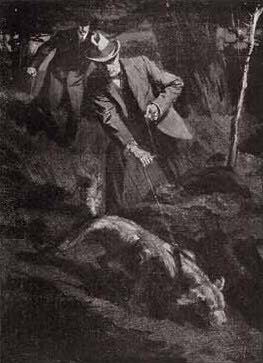An occasional feature about the places in the John H Watson Canon
We had during this time been following the guidance of Toby down the half-rural villa-lined roads which lead to the Metropolis. Now, however, we were beginning to come among continuous streets, where labourers and dockmen were already astir, and slatternly women were taking down shutters and brushing door-steps. At the square-topped corner public-houses business was just beginning, and rough-looking men were emerging, rubbing their sleeves across their beards after their morning wet. Strange dogs sauntered up and stared wonderingly at us as we passed, but our inimitable Toby looked neither to the right nor to the left, but trotted onwards with his nose to the ground and an occasional eager whine which spoke of a hot scent. We had traversed Streatham, Brixton, Camberwell, and now found ourselves in Kennington Lane, having borne away through the side streets to the east of the Oval.– From The Sign of the Four

Streatham SW 16. Although there was believed to have been a small Roman settlement here during the construction of the road from London to the Sussex coast, the name Streatham is of Saxon origin, meaning ‘the dwellings by the street’. In the years preceding the Norman conquest, Streatham is mentioned in documents as being under the jurisdiction of the Abbey of Chertsey in Surrey. In Domesday Book the Saxon chapel was assessed at 8s.
After the Conquest, Streatham, together with Tooting, part of which lay within the former’s parish boundaries, was given to William’s cousin, Richard of Tonbridge, who later bestowed both estates on the Benedictine Abbey of Saint Mary of Bec in Normandy. Owners of Streatham land in following years included Eton College, Edward VI, Lord Thurlow, the Russells, Dukes of Bedford, and the Du Cane family.
From The London Ecyclopaedia, Ben Weinreb and Christopher Hibbert, editors, Adler and Adler, 1983, p. 833
